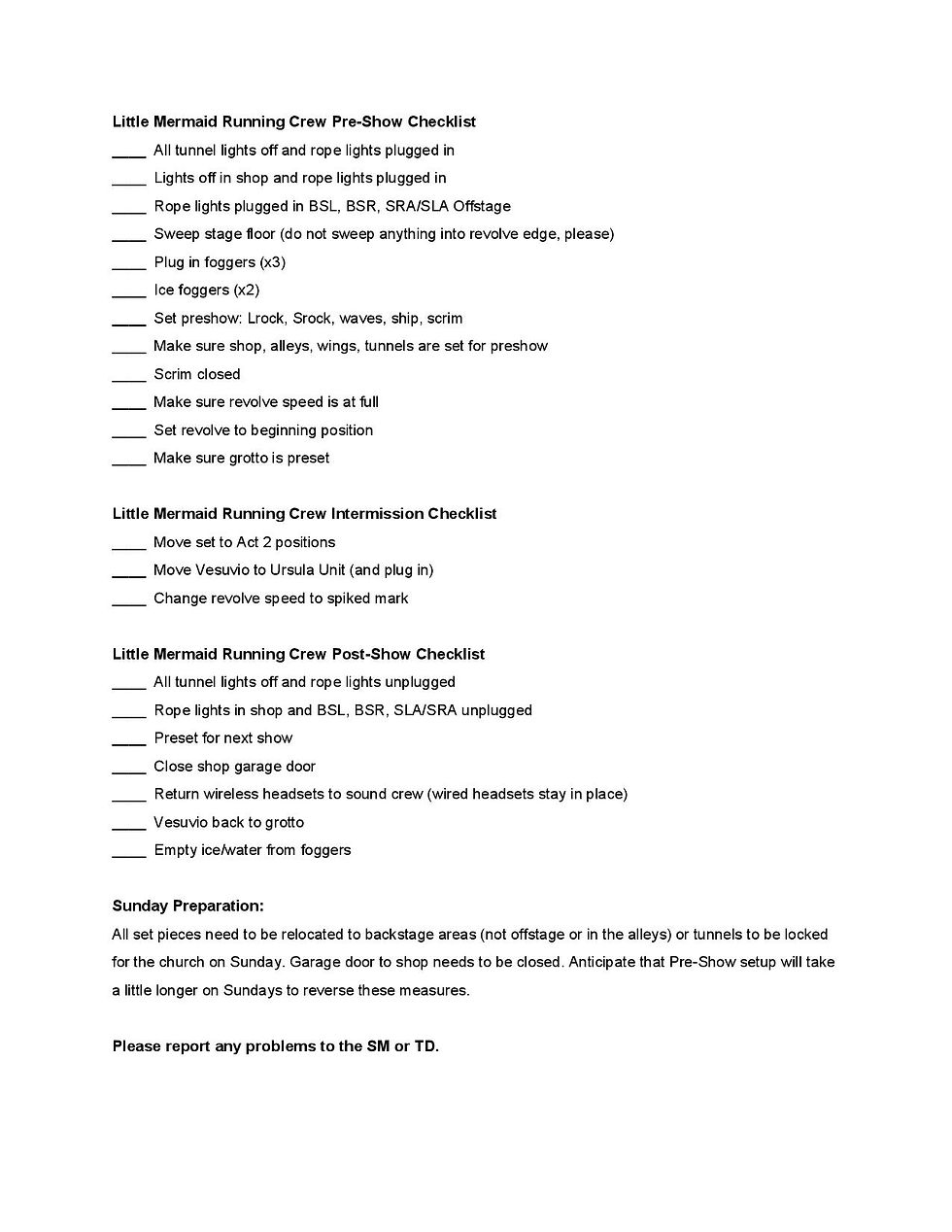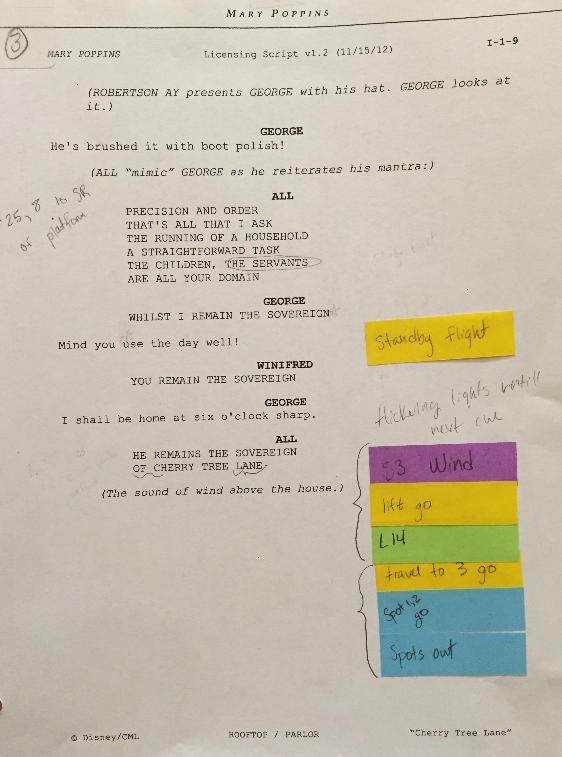





Sanity Spreadsheets
What i learned from my experience stage managing Mary Poppins was that organization is the key to avoiding chaos. Once again, I had a crew numbering around 19 people and each person was set to a particular task. Some tasks had more than one person assigned to ensure timely delivery of set changes and curtain changes. Each member of the crew received a copy of either the set change list or the curtain list (depending on assignment) and knew which specific items were their responsibility and at what times. This list also ensured that, should someone have missed a piece, each other crew member knew what piece needed to go where an when. It also allowed for the complex choreography of the set pieces in the cramped backstage area.
Crew Checklist
Continuing my theme for organization, in order to be sure that every job was completed pre and post show, I created lists that had to be initialed by a crew member. I would check these lists before house open and before letting the crew leave for the evening. Because of our use of three fog machines in the show, the timing of certain checklist items was of great importance.
Additionally, due to incredibly limited backstage space, the set pieces had to be constantly juggled in order to be able to quickly bring about set changes while maintaining room for the actors and orchestra.
Nightmare Cues
Anyone who has stage managed a show knows that it is inevitable for them to have what I call "nightmare cues"---cue sequences that require precise timing, usually in conjunction with several other cues of a various nature (sound, lights, flight, curtain, spots, etc).
Because I believe the ability to manage these cues successfully demonstrates a great organizational aptitude as well as the ability to maintain multiple ongoing aspects of a show, I have included some examples of cue sequences that I called during our production of Mary Poppins.
For further details about the pages, see each slide.
The Little Mermaid
Stage Manager, Theatre Lawrence 2015

This is the page for Mary Poppins' first entrance of the show. As you can see, I have color-coded the different cues. For this sequence, I had 2 light cues, a spot cue, 2 flight cues, and a sound cue. This was called in time to the music within the scene.

This page is from the kitchen scene (where it magically repairs itself). I had to call cues for each magic effect in addition to light cues and spot cues (one for each effect). These were called on movement cues based on the actress playing Mary Poppins and had to be very precisely timed.

This is the cue page for the end of the show. Mostly, the light cues had to be specifically timed based not only on the actors' lines, but on Mary's appearance in the background to ensure that the areas of the stage remained isolated for the proper lighting effect.

This is the page for Mary Poppins' first entrance of the show. As you can see, I have color-coded the different cues. For this sequence, I had 2 light cues, a spot cue, 2 flight cues, and a sound cue. This was called in time to the music within the scene.